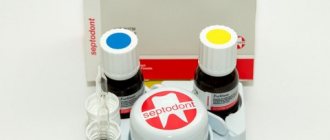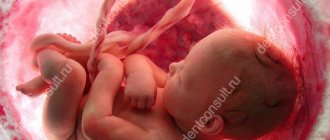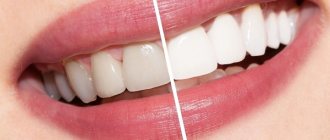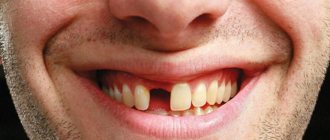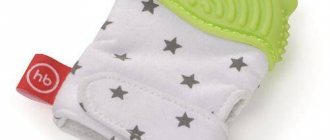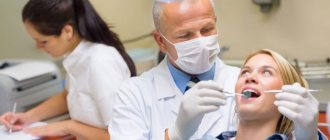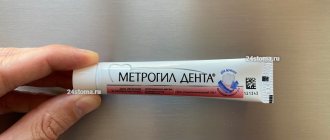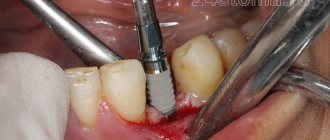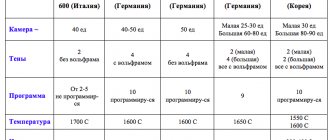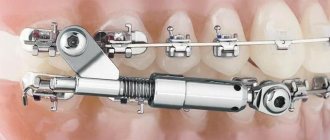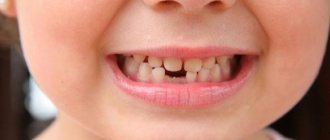Digital dentistry is an ideal choice from a business perspective. Judge for yourself: a combination of high quality, patient convenience, low unit costs and optimized workflows. 3D printing, like the icing on the cake, perfectly complements the digital manufacturing process in the clinic. This market is growing rapidly, bringing the technology within reach of most manufacturers. But what technologies are relevant for dentistry? How do you compare printers based on quality, accuracy, and throughput? Why do some cost less than $5,000, while others cost $80,000 or more? Let's try to embrace the immensity and illuminate the Russian 3D printer market.
3D printing is based on additive manufacturing - the process of layer-by-layer joining of materials to create objects based on data from three-dimensional models. The following 3D printing technologies are common in dentistry today: stereolithography (SLA), selective laser melting and sintering (SLM and SLS), digital light processing (DLP) and jetting. Not long ago, another technology, Daylight Polymer Printing (DPP), appeared on the market - the polymer is cured in ordinary daylight, without the participation of a laser or projector. Each technology can provide the precision required for dental production, but quality may vary depending on the specific machine and system. There is plenty of information online about the technologies listed, so take some time to read about each one before making your final choice. Most importantly, remember that you need to evaluate specific equipment in terms of quality of parts, ease of use, reliability and cost.
Slash PLUS from UNIZa
What is the first thing a dentist needs from a 3D printer? Of course, in addition to high print quality. Of course, printing speed, which will allow you to work without hitches and significantly increase the number of patients. UNIZ Slash Plus combines both of these qualities. Thanks to a dual cooling system (the LCD screen and the backlight are cooled separately) and productivity up to 1000 cm3/hour, this is one of the fastest printers today.
Apart from this, there is no scaling issue for Slash Plus. Print resolution and precision are now independent of mask size, and the light is generated by the LED array. The printer has LCD stereolithography, which allows for a high print area and allows the production of models with a scale of 122 × 192 × 200 mm.
Uniz's work is based on the use of photopolymer resins that cure in LED light. Thanks to the uniform light source of Slash Plus, it provides high printing accuracy and productivity.
The printer has extremely simple and intuitive UNIZ software, which allows you to control the operation of several printers from one computer at the same time. A convenient interface will allow you to control its operation from your smartphone. It should be mentioned that the printer is easy to use, spill-proof, and easy to clean. Its body is made of reinforced steel and carbon fiber. But what is surprising is that, with all its high-tech functionality and capabilities, it has an absolutely affordable price.
- Printing technology: LCD;
- Printing speed: 200 cm³/hour;
- Printing area: 122 x 192 x 200 mm;
- Layer thickness: 10-300 microns;
- Dimensions: 35 × 40 × 53 cm.
WHERE CAN I BUY
How to choose the right 3D printer for dentistry
How 3D printing can be used, or is already used, in medicine and, in particular, in dentistry, quite a lot of notes and articles have been written, a large number of reports and lectures have been given. Almost all participants in these debates are aware of the advantageous prospect and inevitability of the arrival of 3D printing in most areas of dentistry.
But few places voice technical and economic specifics when choosing this equipment, much less point out the obvious disadvantages of a particular 3D printer or 3D printing technology.
In this article, we will try to analyze in more detail the main nuances when choosing a professional 3D printer for dentists, taking into account the most important factors - optimal 3D printing technology, quality, reliability and most importantly - the affordability of a 3D printer on the Russian market. We will also find out what influences the choice in favor of 3D printing today using the example of one dental clinic.
Choosing SLA
The very first professional 3D printing technology was stereolithography (SLA), which turned 30 this year. SLA remains the most versatile and low-cost 3D printing technology. It is supported by a large selection of photopolymers with different physical and chemical properties. The laser system has a much longer service life than similar DLP technology, which relies on light sources such as LEDs or projector lamps, which require periodic replacement and financial investment. For a long time, the main patents for the use of SLA technology (exactly in the form in which it was invented) were owned by the American company 3D Systems. Each time, making small changes, it extended the validity of patents, remaining an absolute monopolist in the market of professional and industrial 3D printers using SLA technology.
In 2014-2015, the situation changes dramatically and after the end of all kinds of “copyrights”, many manufacturers of 3D printers using SLA technology appear on the market. First of all, these are Asian analogs/clones of well-known brands without making any design changes. With an attractive price from $1,000 to $4,000, but producing completely non-core results. Therefore, this category cannot be classified as a professional line due to the discrepancy between the print quality and the internal equipment of the equipment itself.
No matter how advertising articles or online store managers convince you otherwise, most of them simply read the text of the same advertising article, you will simply lose money, time, and even be disappointed in the correctness of your choice in favor of 3D printing. Therefore, we only consider 3D printers that truly meet the accuracy and quality parameters declared by the manufacturer.
Price gap
And so the price range of truly high-precision and reliable 3D printers (SLA) in Russia starts from $6,500. It is affordable and suitable for short-run printing of one-off designs in rigid, clear or burnable resins.
But here it is important to understand that if the manufacturer of 3D printers (SLA) does not position its model as a direct 3D printer for dentistry, but presents its equipment as allowing it to be used in all production areas equally efficiently and as profitably as possible, this printer is most likely has software and technical limitations. For example, such as the inability to place models vertically, but only at 45°, significantly reducing the working area of the table. To date, there are simply no multidisciplinary 3D printers that are equally suitable in their starting configuration for printing, for example, color mock-ups of buildings and surgical templates for dentistry. Therefore, if you are interested in getting full performance from a 3D printer without losing quality in dentistry, we will also ignore this line of 3D printers.
The subsequent price range for professional 3D printers (SLA) for dentistry starts from $45,000 to $800,000.
This is no longer a small financial investment, which also requires loading equipment to reduce its payback period, which can reach several years.
This class of equipment has a number of disadvantages, which the supplier sometimes keeps silent about:
- Linked to using only your own consumables.
- High cost of printing.
- Completely closed software.
- Special conditions for operating a 3D printer.
- The need to purchase additional equipment.
- Expensive post-warranty service, long delivery times for components, etc.
3D printer Basic (Dental) - the golden mean
We offer you the most optimal and cost-effective solution on the market of professional 3D printers (SLA) for dentistry.
The Basic (D) 3D printer is not positioned with well-known brands of desktop 3D printing options. This is a more affordable option for professional and expensive equipment, capable of continuously performing large volumes of printing, while having unique control functionality and a set of excellent features. What the Basic (D) offers you is truly something no other 3D printer (SLA) can match.
Here are just a few factors in the predominant justification for Basic (D):
- The Basic (D) 3D printer and its software are aimed directly at dentists.
- Vertical arrangement of models without loss of quality when printing at 25 microns.
- The fastest print speed among competitors.
- There is no connection to consumables. A unique system for adjusting the laser illumination speed allows you to achieve high accuracy results using any third-party photopolymer (405 nm).
- Five printing modes (25\30\50\75\100 microns).
- Low cost of printing.
- Direct printing of scanned models in STL format.
- 80% of all service calls are resolved by remote connection using software, without requiring a service engineer to visit.
- The most favorable price/quality combination on the Russian market of 3D printers for dentistry.
In addition to the above indicators, we also note the standard features of Basic (D):
- Printing from paraffin-containing photopolymer for subsequent casting without ash content, using standard burning temperature conditions.
- It is also possible to print with rigid\ABS\rubber-like\transparent\white\flesh color and many other photopolymers.
- All photopolymers are non-toxic and certified to standard IV safety class.
- The working life of the laser system is 10,000 hours, which is confirmed by the warranty statement.
- Full service support in Russia.
The release of the Basic (D) 3D printer to the Russian market was preceded by a lot of work by the entire team. We conducted in-depth testing of this 3D printer for over a year before offering it to you. Our specialists were trained at the manufacturer’s production sites, studied the experience of using this equipment among dentists in other countries, and finally, we added a number of optional changes to adapt this equipment to the requirements of Russian dentists. We really have something to be proud of. We ask you to evaluate the combination of simplicity and reliability in using the Basic (D) 3D printer with its high-precision printing and versatility of work performed in the field of dentistry. We are always ready to answer your questions, provide full consultation and demonstration of the Basic (D) 3D printer.
Give the work to the “machines”
Let's look at one specific example of using a Basic 3D printer. Meet this dentist of the highest category, Alexander Nikolaevich Romankov (Clinic of Modern Dentistry, Sochi, founded in 1991), who has devoted his entire adult life to his profession, just like many colleagues, passing on his knowledge and experience to the future generation, his daughter, also a dentist.
His short story about how he came to use 3D printing in his clinic
“Today, more than 2,500 people are regular patients of our clinic, plus a constant influx of new clients (1-2 daily). Over the past two years, the volume of work performed has increased significantly, taking into account the introduction of fairly new orthodontic services: correction of dental occlusion without braces (aligner system), production of our own surgical templates for installing implants. It was for this work that we planned the introduction of 3D printing. We simply want to delegate these tasks to machines, thereby reducing the visit time of our clients and significantly saving our energy. Don't forget the financial component. For example, printing one dental impression on a Basic (D) 3D printer costs us about $8, and soon this figure may decrease by another 1.5 times, since we may begin to use a photopolymer from a Russian manufacturer. We conduct planning remotely and one course costs about $170 for us. Next comes the molding and processing of the mouthguard.”
Tips for choosing a 3D printer supplier
1. It is not recommended to purchase equipment from companies that do not have a demo printer or print samples of this printer.
2. The company must have full or partial service in Russia, and not a guarantee from the manufacturer.
3. When purchasing a 3D printer, you must ask the supplier to print your own 3D model for you, or demonstrate a similar one. A conscientious supplier will not see anything strange in this, and moreover, a company that is confident in its product and has come to the market for more than one day should offer you pre-sale printing, albeit for a certain amount, which is deducted from its cost when you subsequently purchase the equipment.
4. Ask for contacts of 1-2 clients who have already purchased this or similar equipment to form an independent opinion about this company and its product.
By following these simple tips, you will weed out unqualified suppliers and thereby save time and money in the future.
Why am I overpaying?!
There is an opinion/practice that it is more profitable to purchase a 3D printer for non-industrial purposes directly in the manufacturer’s country or order it in Europe or the States. Why pay extra to local suppliers and dealers when you can simply pay extra for delivery. And this is a completely reasonable argument in favor of financial gain. But immediate benefits can lead to unpleasant moments in the future. By purchasing a 3D printer from an official dealer/reseller, you assign all service and warranty responsibilities directly to him. Don’t forget, your equipment works in production, that is, it prints a service that has already been paid for. Thus, if for some reason the 3D printer suddenly simply breaks down, you begin a chain reaction in the form of work not completed during the work, postponement of a patient’s visit (or several), loss of time, financial losses, and so on.
FS121M-E from Farsoon
The peculiarity of this model is that FS121M-E has a narrow specialization in the production of products for dental use. The main difference with the FS121M-E is the reduction in final cost due to the use of an F-theta lens instead of a dynamic focusing system, mechanical features and limited access to material parameters, which are used primarily in materials research and development. The vacuum system for fixing the work table allows for the most efficient use of the entire construction area for the placement and production of products. Up to 170 crown models can be placed on one work table. Their printing time is 6 hours.
It is important to note that Farsoon equipment has an open architecture and can be used with materials from third-party manufacturers.
- Detailing: wall thickness 0.3 mm;
- Accuracy: no worse than 0.05 (up to 0.025-0.03) mm;
- Material: CoCrMoW;
- Printing technology: SLS, SLM;
- Print area: 120 x 120 x 100 mm;
- Layer thickness: 0.02 – 0.08 mm;
- Average consumption of inert gas (argon/nitrogen): 3 l/min;
- Dimensions: 100 x 78 x 170 cm.
WHERE CAN I BUY
Let us denote the initial conditions
Having become a little familiar with the niche that we will occupy, we need to pay attention to who will use these 3D printers.
First of all, equipping a dental clinic with 3D printers should be profitable - we will pay considerable attention to issues related to the speed of return on investment and the optimal use of equipment.
Newbies to dentistry, although they have the potential to gain a foothold in the niche of 3D printing for dentists, will pick up all the bumps along the way and are more likely to need advice about dentistry in general than advice on the use of 3D printing. Therefore, we will cover, for example, an existing dental clinic or dental office.
At the same time, those who already use 3D printing most likely know what they are missing and what is not very necessary. I suggest that such a reader go straight to the description of the advantages of individual models - most likely you will be able to find offers that are interesting to you.
Equipment for a new 3D printing laboratory
A 3D printing lab might look like this
So, it turns out that we are discussing the choice of a 3D printer for a new 3D printing laboratory in an existing dental clinic or dental office.
The level of investment should be relatively low - for an individual dentist who runs his own practice, the investment should be minimal.
A large dental clinic will be able to afford not only to allocate a separate, well-equipped room for a 3D printing laboratory, but also to hire specialists who will service the laboratory specifically, without combining this activity with anything else.
In addition to the LCD 3D printer, a 3D scanner, a washing and additional illumination station will be useful. When creating a 3D printing laboratory in a large clinic, you can immediately plan to purchase machines for creating products using burnout casting and thermoforming.
Both LCD and SLA 3D printers require a separate, well-ventilated room with a workbench. If for a small office this may be a separate room the size of a closet, then in a large clinic it is worth thinking about allocating the appropriate area not only for the printers themselves, but also for tables for post-processing, for shelving for storing materials, and for workstations for service.
Who are the Experts in Dental 3D Printing?
Only a doctor can be an expert in 3D printing in dentistry
A separate question is who will work directly with 3D printers.
It would be more profitable for a large clinic to immediately hire specialists with experience in using 3D printing in dentistry. At the same time, in a small clinic or in the case of a private dental practice, the dentist or dental technician himself can relatively quickly learn how to use and maintain a 3D printer.
The dentist must still evaluate and accept the products. It is quite common to hold general seminars for dental technicians and dentists in the same clinic.
It is very important to understand that only a dentist can be an expert in dental 3D printing, evaluate the quality of prints, and set criteria! Even the most experienced 3D printer cannot do this alone.
Liquid Crystal DENTAL by Photocentric
Photocentric is actively working on creating a new generation of printers. In the new model, designed specifically for dental use, the manufacturer uses UV LCD printing technology instead of DPP. Thanks to this, in addition to high accuracy characteristics, the device provides the ability to use materials from third-party manufacturers of photopolymer resins for dentistry, including those certified in Russia. I must say that the result was worthy. Compared to previous versions, this model is faster and more productive: 42 dental models can be produced in 1 hour.
- Printing technology: UV LCD;
- Printing area: 293 x 165 x 250 mm;
- Printing speed: 42 models in 1 hour, 30 minutes for temporary crown platform.
WHERE CAN I BUY
Review of photopolymer resins from SprintRay
The range of dental problems solved by SprintRay photopolymer materials is very wide. Almost all of them are biocompatible and have the necessary certificates of quality and compatibility.
The products obtained with their help are used in dental orthopedics, creating aligners, as surgical templates, molds, matrices and burn-out models. The experience of SprintRay clients using these materials in their practice is very wide. On the manufacturer's official website you can find successful cases for almost any aspect of dental prosthetics or treatment. However, without dwelling on this for too long, let's take a closer look at the resins themselves.
SprintRay Die and Model 2
Rapidly 3D Print High-contrast Dental Models Photopolymer resin for rapid printing of non-implantation products that require high clarity and contrast of the surface of the model, layouts and templates for planning surgery, various demonstration and fitting items. The version with the letter 2 in the name is modified and has improved characteristics - better adhesion to the working surface and easier separation from thermoplastic elements, which is especially important for creating aligners. It has improved characteristics of tensile strength and bending modulus of elasticity. An analogue of SprintRay Die and Model 2 Tan, but gray, has all the same advantages, but it is more saturated with pigment, which makes the material even more contrasting.
SprintRay Study Model White 2
Material for fast presentation printing with rich white color even after exposure, thanks to the accelerated post-processing (curing) process, allows you to make impressions during one patient visit.
SprintRay Splint
Biocompatible material with high strength for creating cotter pin structures and occlusal overlays.
SprintRay Surgical Guide 2
Precise material for creating operating templates and guides in prosthetics. Biocompatible and durable photopolymer.
SprintRay IDB 2
SprintRay Indirect Bonding 2 resin has improved tear resistance and clarity, making it ideal for quick staple installations. Improved mechanical properties allow orthodontists to create thinner trays with greater precision, significantly speeding up the indirect bonding process.
SprintRay Try-In
Biocompatible, high-density material for bite testing before placing implants or crowns. Allows you to check your digital model before surgery thanks to its fast printing and durability.
Burnt resin - SprintRay Castable 2 Cast allows you to create waxes for the production of crowns, bridges and any related structures.
Liquid Crystal MAGNA by Photocentric
A new 3D printer model with a large print volume at an attractive price. A large desktop area allows the user to print a large number of models simultaneously without slowing down. For example, using the proprietary Photocentric MAGNA DENTAL WHITE photopolymer, you can create either 46 dental models in 2 hours or 105 dental models in 4 hours in one printing cycle.
- Printing technology: DPP;
- Printing area: 510 x 280 x 350 mm;
- Layer exposure time: from 14 sec;
- Layer thickness: 25-200 microns.
WHERE CAN I BUY
NextDent 5100 from 3D Systems
Using Figure 4™ technology provides high printing speed. A number of innovative solutions make it possible to achieve one of the best speeds and performance in its class, while the price of the device is acceptable for most clinics and laboratories.
Our range of dental materials and compatibility with leading dental software enable you to print trays, models (orthodontic/prosthetic), surgical guides, dentures, orthodontic splints, crowns and bridges with increased speed, accuracy and efficiency while maintaining low production costs. The printer is compatible with most intraoral and laboratory scanners. The display is touch-sensitive, but responds to touch with gloves.
- Printing technology: DLP;
- Print area: 124.8 x 70.2 x 196 mm;
- Maximum resolution: 1920 x 1080 pixels (Full HD);
- Printing speed: 20-30 minutes for printing models, 15-20 minutes for temporary crown platform;
- Dimensions: 42.6 x 48.9 x 97.1 cm.
WHERE CAN I BUY
How is a crown placed on a tooth?
The procedure takes quite a long time and consists of several stages.
Preparation. At this stage, the doctor draws up a treatment plan, which will depend on the complexity of the particular case, prescribes an x-ray examination and discusses with the patient how the crowns will be installed.
Preliminary treatment may require the removal of teeth if they cannot be restored. A bridge prosthesis involves the use of fixation of several supporting teeth, and one of the points of the plan may be the process of clarifying their number. After this, the cost of installing crowns on the teeth is calculated, and the time frame for manufacturing the prosthetic lock and adaptation to the patient’s oral cavity is determined. After all the preparatory stages before prosthetics, the patient is invited to an orthopedic dentist to treat the supporting teeth and make an impression.
Removal of damaged tissue is carried out using local anesthesia. This also applies to tooth depositing, since during preparation the bur may touch the gums, which may cause discomfort. The condition of the tooth tissue is assessed taking into account the thickness of the crown being installed. Grinding results in the fact that only a stump remains, on which the prosthesis will later be installed.
Making a crown. The doctor takes impressions after preparing all the teeth that will be fixed with single crowns or bridges. Additionally, a 3-dimensional model is created using endoscopic equipment. Using impressions and scan data, dental technicians in the laboratory cast plaster models that are used directly to make the crowns.
Dentures can be made from various materials according to the patient's choice. If the process of producing crowns takes a long time, the patient is provided with plastic structures during this period. This approach not only helps maintain the aesthetics of your smile, but also protects already treated teeth.
Crown fitting. Performed to determine the accuracy of the shape and color of dentures. If the crown fits perfectly, its base is covered with a special ceramic mass. The fitting process can take a long time. At the preparatory stage, the patient will have to visit the dentist at least 2 times. The length of time spent in the doctor's office depends on the condition of the patient's denture. Subsequent production of the prosthesis in the laboratory may take several weeks. Installation of the prosthesis using temporary cement can take about a month.
Installing a crown on a tooth. If the prosthesis is ready, the structure is installed using special cement. Initially, a temporary composition is applied, which allows you to safely control the position of the prosthesis and the reaction of neighboring teeth. If the patient does not experience discomfort, permanent crowns are installed. The choice of method depends on the degree of tooth decay.
Duplicator 7 PLUS from Wanhao
Since the Wanhao Duplicator 7 was launched in 2022, it has created quite a stir in the DLP 3D printer market. The opportunity to purchase a DLP printer for $500 was a real sensation. Since then, hundreds of units have been sold worldwide. The new PLUS version costs a little more but offers some additional benefits. Thanks to such qualities as enhanced cooling and minimal error, the printer is a professional device for use in dentistry.
Comes fully assembled, just install the tray and add resin. You can use open source software. You don't need to buy anything other than the resin, sometimes the resin tank itself.
- Printing technology: DLP;
- Printing speed: 30 mm/h;
- Print area: 120.96 x 68.5 x 180 mm;
- Layer thickness: 35-100 microns;
- Dimensions: 35 x 35 x 52 cm.
WHERE CAN I BUY
Characteristics and equipment of SprintRay Pro 55
As befits a product of this level, Sprintray Pro 55 comes in a fairly rich package. The basic kit includes everything you need, plus it may include some additional equipment, such as a flash camera. First, let's evaluate the characteristics and capabilities of the device, and then take a closer look at the package.
The first step is to clarify the price category of this 3D printer. Sprintray Pro 55 is a specialized device at an appropriate price. At the time of writing, the cost of the device is $9,990, which is significantly more expensive than the same Formlabs Form 3B - 420,000 rubles and several times more than the Phrozen Sonic XL 4K. However, it is worth noting that Form and Phrozen position themselves as devices with a wider range of applications than SprintRay, and the country of origin also plays a role. SprintRay is designed and manufactured in the USA, the quality of assembly and components is much better than that of the Chinese Phrozen and at the same level, or even slightly better than that of the European Formlabs.
In addition to this important feature, SprintRay slightly outperforms Form 3B in the size of the working area and is approximately on par with Phrozen, however, it is qualitatively ahead of its rival in printing speed due to a clever illumination system, which we will talk about a little later.
The minimum layer thickness is limited to 55 microns, the device has a 7-inch touch display with protective glass Guerilla Glass, the dimensions of the device are 35 x 40 x 50 cm, it fits quite comfortably on any desktop.
The printer kit includes the necessary tools - spatulas, gloves, mesh for pouring resin and other small things, but, unfortunately, SprintRay does not contain a full set for manipulating resin. These tools will have to be purchased separately.
Also, complete with the printer you can buy a proprietary illumination camera, we’ll talk about it a little later at the end of the article.
ZOBU from 3D Artel
The price for this model is more than acceptable, however, the print quality is excellent. The design of the guides ensures high positioning accuracy and reduces the likelihood of deviations. The printer is equipped with an LG diode matrix for better polymerization of the material. I must say that the model is very compact, given the rather large printing area.
A removable, almost opaque cap protects against accidental exposure. Control is carried out using a touch screen. This system is open.
- Printing technology: DLP;
- Print speed: 3 seconds/layer;
- Printing area: 115 x 65 x 155 mm;
- Dimensions: 22.5 x 22.5 x 41.5 cm.
WHERE CAN I BUY
Finalization of the 3D model
Today, there are several options for printing dental prostheses, which differ in the type of material used, the method of forming the blank, and so on. Regardless of the option, increased demands are placed on the quality of the model. To do this, the layout is modified using special software. This can be general or specialized software. Rework is required to eliminate serious defects, improve quality and reduce the time required for post-processing immediately after installation of the prosthetic tooth. To improve quality, modern printers have support and special add-ons.
Hunter by FlashForge
Suitable for printing models, temporary crowns and surgical guides. The model gained its popularity among dentists due to the combination of good speed, high printing accuracy and low price. Professional FlashPrint software is compatible with most dental digital design software. The system is open and compatible with third generation polymers. The device does not require calibration, is equipped with a Full HD optical element and uses compensation technology, which makes it possible to obtain a model with smooth edges.
- Printing technology: DLP;
- Printing speed: up to 30 cm³/hour;
- Print area: 120 x 67.5 x 150 mm;
- Layer thickness: 35-100 microns;
- Dimensions: 36 x 31 x 56.5 cm.
WHERE CAN I BUY
3D printing process
Our review unit came with a bottle of Die and Model 2 photopolymer in beige.
Carefully pour the material into the cuvette - we deliberately poured a little photopolymer, due to the small model, so as not to drain excess liquid after printing. The operating level should be much higher.
We select the model file in the Print menu and we can estimate the printing duration - 1.17 minutes. Not bad considering the size of the model. By the way, you install the downloaded material yourself when setting up the device and selecting parameters in the slicer. SprintRay works with direct loading of the polymer into the cuvette, without tricky cartridge systems. However, profiles for all supported materials are built into the firmware and slicer by default.
In the next window, the device reminds us to shake the photopolymer before filling and fill the cuvette to the min mark.
Click on the print button and watch the process. As you can see, the model is cut into 397 layers with a layer thickness of 100 microns. Printing will take 1 hour and 18 minutes.
